- Home
- Paul Christopher
The Templar Conspiracy Page 17
The Templar Conspiracy Read online
Page 17
By morning Jefferson’s photograph appeared in every newspaper in the United States, from broadsheet to tabloid, including front page above the fold in the New York Times. For Kate Sinclair, the publicity was priceless.
Forty-eight hours after the event itself, reading a script hastily written by Morrie Adler, the president announced that Richard Pierce Sinclair had been appointed to the vice presidency of the United States. By the end of the week it was the cover of People magazine and Time. Within ten days Patrick Henry Jefferson had a New York agent and slightly more than half a million dollars in the bank.
25
“This is a very, very, bad idea,” said Peggy. She and Holliday were sitting in the cab of the old pickup truck they’d borrowed from Harry Moonblanket two days before. The battered old F150 was parked across from a plain white bungalow on West Federal Street in Bedford Mills. It was typical of most of the homes in the working-class Virginia town: slightly run-down, in need of paint and sitting on a half-acre lot crusted with a thin layer of old snow. A pink flamingo was frozen in place on the front lawn and the large area in the rear showed the hard, lumpy ruts of a vegetable garden. A carport with a fiberglass roof had been tacked on to the right side of the house like an afterthought. Sitting under the green, corrugated sheet of plastic was a brand-new, jet-black Porsche Turbo S.
“It’s the only idea I have left,” said Holliday. He scratched at the heavy bristle on his cheeks and chin—his early attempt at a disguise. With the eye patch he looked quite frightening. “We can’t go back to the house in Georgetown, you can’t go back to Rafi and I can’t think of anyone else we can go to for help. We’ve got to figure this whole thing out by ourselves.”
“What good is this guy going to be?” Peggy asked. “I still don’t get it.”
“Neither do I,” answered Doc. “There’s something wrong about it, just like Brennan and Philpot and all the rest. This guy Jefferson was there. Maybe he saw something we missed. It’s worth a shot.”
“And if he turns around and blows the whistle on us?”
“Then we’re no worse off than we are right now,” said Holliday. “On the run with no place to go.”
The gun used to shoot the newly appointed Vice President of the United States had been a short-barreled Walther P22 semiautomatic pistol that had been purchased quite legally at a local Bedford Mills gun store. The identification provided by the purchaser had identified him as Theodore Douglas Trepanik, a resident of Bocock, Virginia, a double-wide trailer park suburb of Lynchburg. Further investigation had uncovered that Trepanik was employed as a technician for Falwell Aviation at the nearby Lynchburg Regional Airport.
As it turned out, Theodore Douglas Trepanik had passed away ten months previously and his trailer home in Bocock had been ransacked during the funeral. Although his wife, AnnieRuth Trepanik, had taken care to cancel all of her late husband’s credit cards, she hadn’t noticed that both his driver’s license and Social Security card were missing from his wallet. The wallet had been on his bedside table along with his keys and reading glasses on the night of the massive heart attack that killed him.
Subsequent to the shooting, investigators from the FBI and Homeland Security discovered that the assassin had been registered at the Bedford Mills Super 8, using the Trepanik identification. Searching the room they found a Kuwaiti passport in the name of Shamed Khalil Zubai, as well as a Dutch passport in the name of Ismael Aknikh. The Kuwaiti passport showed an entry into the United States four months previously while the Dutch passport showed an entry into JFK in New York only two weeks before.
On that basis it was assumed that the name on the Kuwaiti passport was an alias and that Ismael Aknikh was the man’s real name. According to the Dutch authorities Aknikh was thirty-two years old, born in Amsterdam of Moroccan immigrant parents. Both his parents were dead and he had no other known family in Amsterdam or anywhere else in the Netherlands. Beyond that the killer was a cipher, as was the group who took credit for the Sinclair shooting, as well as the assassination of the Pope: Jihad al-Salibiyya.
Ismael Aknikh and the Jihad al-Salibiyya were the fulfillment of Richard Sinclair’s most dire predictions: an extremist Muslim terrorist organization centered in the United States; a festering wound that up until the night of the shooting had gone unnoticed.
At a press conference held at Walter Reed hospital in Washington the day after the shooting Kate Sinclair stated unequivocally that the attempt on her son’s life was a call to action. All the intelligence, counterterrorist and federal police agencies, including Homeland Security, had failed to identify either Jihad al-Salibiyya or the threat that it represented. According to her, the attack was nothing less than an early warning of much worse to come, a clarion call to the American people and their government that another 9/11 was in the making. In closing Kate Sinclair then made her own ominous prediction: Jihad al-Salibiyya’s next attack would almost certainly come sooner rather than later.
“What if Jefferson is under surveillance?” Peggy asked nervously.
“Where?” Holliday laughed. “The street is empty, the houses are a hundred yards apart and there’s no one around. It’s too damn cold. There’s no place to hide around here and, besides, why would anyone want to put a newspaper photographer under surveillance?”
“So far we’ve had the CIA, the Secret Service, the Italian police and the Royal Canadian Mounted Police coming after us. Why not the Bedford Mills Police force?”
“Only one way to find out,” said Holliday. He zipped up his ski jacket, then climbed out of the car. Peggy followed, muttering under her steaming breath.
Holliday reached the rickety front steps and climbed up to the equally rickety stoop. The closed curtains on the front windows looked as though they’d been made from Star Wars sheets—tiny images of C3PO and R2D2 repeated endlessly. He glanced over at the Porsche. It was so new you could still see little scraps of the dealer’s label on the passenger’s side window. Give this Jefferson credit; he’d established his newfound wealth in record time. Holliday knocked on the door.
From inside the house he could hear the sound of a television blaring, the Brain telling his friend Pinky of yet another plan to take over the world. Hearing the Animaniac cartoon, Holliday realized that it was Saturday. Suddenly the door was jerked open by a man in red-and-blue pajamas, holding a half-eaten Pizza Pop in one hand. It smelled revolting and was oozing red sauce over the man’s hand. He was in his forties, with thin brown hair and an oval face pitted from adolescent acne, and was wearing heavy wire-framed spectacles. He had a small mouth and no chin at all.
“What?” said the man.
“I’d like to talk to you about the town hall meeting you covered a few nights back.”
“Screw off,” said the man. “I’m watching TV.” He slammed the door but Holliday managed to get his foot in first.
“It’s important,” said Holliday, trying to keep his voice even.
“I told you, screw off!” said the man, pushing as hard as he could against the door. Holliday reached into the pocket of his jacket and pulled out the ancient Beretta Storm that Brennan had lent him. He poked the heavy barrel through the space in the door, aiming the old automatic at the man’s midsection.
“Step inside the house,” said Holliday.
The man’s eyes widened behind the glasses and his hands shot up in the air, squeezing the contents of the Pizza Pop out onto his hand and arm. He stumbled backward into the house. Holliday followed. Peggy came last, shutting the door behind her.
“Is this a robbery?”
“No.”
“Who are you? All the money’s in the bank.”
“I told you it wasn’t a robbery.”
“Then what do you want?”
Holliday sighed. Back to square one.
“We want to know what went on at the town hall meeting.”
“Can I sit down?”
“Certainly,” Holliday said with a nod.
Jefferson’s living r
oom was a slum. Newspapers were everywhere, Chinese take-out containers and pizza boxes were scattered around on tables and chairs, and the long, gold-colored couch had crumpled clothes draped over the back. He popped the empty shell of the Pizza Pop into his mouth, licked most of the goop off his hand and arm, then wiped off the rest with an old shirt hanging over the couch. He sat down. The television, a huge flat-screen on the opposite wall with equally massive speakers, blared out the Brain’s most famous expression: “Are you pondering what I’m pondering, Pinky?”
“Turn it off,” said Holliday, raising his voice over the sinister musings of the hairless mouse. Jefferson manipulated the remote and the Brain cut off in midponder.
“The town hall meeting,” prompted Holliday.
“The senator got shot. The shot made him vice president. He got lucky; I got lucky.”
“How many pictures did you take?”
“Lots.”
“What does that mean?”
“Maybe two hundred or so. It’s easy with digital.”
“What camera?” Peggy asked.
“Nikon D90.”
“How were you shooting? Single-frame or video?” The D90, Peggy knew, was one of the very few single-lens-reflex cameras capable of shooting something as complex as a full-length feature film. It had already been used to shoot more than one television commercial.
“I was shooting single frames in the beginning. Establishing stuff—you know, crowds, a few local big guys ’cause they want to feel important. You know. For the speech I went to video. That’s how I caught the shot so well, the one of the senator and his mom. I just isolated that single frame and sold it.”
“Where’s the rest?”
“On my computer.”
“Get it,” Holliday said.
The computer turned out to be a Sony Vaio Z with a gigantic 358-gigabyte hard drive. Peggy gingerly picked up the assorted garbage on the coffee table in front of the couch and carried it to the kitchen. She came back a moment later with a stricken look on her face.
“It’s a war zone in there,” she whispered to Holliday. “There are things growing in the sink and there’s a nest of little spiders in the cutlery drawer.”
“Fruit flies, too,” said Jefferson, overhearing her comment. “I got a real problem with them, as well. I don’t know where all the damn bugs come from.” He frowned. “Maybe I should call an exterminator or something.”
“Buy some Venus flytraps,” muttered Peggy
“Show me the pictures,” said Holliday.
Jefferson brought up a file and opened it. He began running through the pictures he’d taken. The first several dozen were taken from somewhere in the town hall parking lot and showed various individuals arriving. There was nothing of particular interest until Jefferson took up a position along with several other photographers in what had once been the orchestra pit. From that position he took a series of panoramic shots of the audience and then turned his attention up to the stage as Senator Sinclair appeared and took his place behind the podium.
“Go back,” said Peggy, looking over Jefferson’s shoulder. “Five frames or so.”
“Sure.” Jefferson clicked back through the pictures.
“There,” said Peggy, “there’s your man.” The photograph showed a man in his early thirties, blank-faced, white and beardless. He was dressed in chinos and a red nylon, quilted ski jacket, and was sitting on the far right of a middle aisle. He didn’t look anything like the classic, wild-eyed jihadist. He looked like he worked as a checker at a Piggly Wiggly store and Peggy said so.
“Just the kind of freak the senator’s been talking about,” said Jefferson. “He was right enough about that.”
“Run the pictures ahead,” said Holliday.
Jefferson did as he was told. Twenty frames further on Holliday stopped him. “This is the moment he gets hit.” In the photograph Sinclair was halfway through a clockwise pirouette, thrown backward away from the podium, almost pushed to the floor by the impact. The camera swerved, searching through the audience for the shooter, then went back to the prostrate senator, sprawled on the floor, left hand clutching his right shoulder.
“Back, slowly,” Holliday instructed.
Jefferson went back through the shots, back to the moment when Sinclair began to spin and fall.
“Stop.”
Jefferson stopped.
“There’s the problem,” said Holliday. “Our friend the Dutch Arab is sitting to the right of the stage. With Sinclair facing the audience he should have been hit on the left, not the right. And if he was shot from the right the force of the impact would have turned him counterclockwise, not clockwise. Not to mention the fact that this man Aknikh was sitting below the senator. The bullet’s trajectory would have been up, not down. He would have been pushed off his feet and backward by the shot, not straight down.”
“Sounds like a lot of Kennedy-conspiracy gobbledygook,” snorted Jefferson.
“A lot of that gobbledygook, as you call it, still hasn’t been logically answered,” Holliday said.
“So he wasn’t shot by Aknikh?” Peggy asked.
“He couldn’t have been,” answered Holliday. “He was definitely shot from above and from the left.”
“The balcony,” said Jefferson.
“What balcony?”
“There’s a balcony in the town hall. It’s used for storage now.”
“Then he wasn’t the shooter,” Peggy said. “The whole thing was a setup.”
“It looks that way.” Holliday nodded. He turned to Jefferson. “Who else has seen these photographs?”
“A guy from the FBI came around and said he had a warrant to impound them all as material evidence. He asked me if I had copies but I said no.”
“You lied?” Peggy asked.
“They’re my pictures, aren’t they?” Jefferson huffed.
“They may be your death warrant,” said Holliday. “If I were you I’d hop in that new Porsche of yours and get the hell out of town.”
“Why? I haven’t done anything wrong. I have my rights.”
“Maybe they’ll put that on your tombstone,” said Holliday. “The fact is, people in high places are laying in a cover-up and you and your pictures are a loose end. These people snip off loose ends without even thinking about it.”
“Take his advice,” said Peggy. “Pack your bags and run like hell.”
“Kate Sinclair had a script all along,” said Holliday as they drove away. “First the Pope, which gets the vice president to travel to Rome, then the VP gets killed and then her son plays the wounded martyr.”
“And now he’s the VP,” said Peggy.
“I’ve met Kate Sinclair,” said Holliday, his tone grim. “She’d never go to all this trouble to wind up settling for second-best. The script doesn’t have an ending . . . yet.”
They were less than a mile out of town when they were pulled over by a red-and-gold West Virginia State Police cruiser. Holliday waited for the inevitable; he had only his own identification and no papers for the old pickup truck. When they ran his name through the computers, all hell was going to break loose.
As the trooper approached, bundled up in his uniform parka, Holliday rolled down his window. The trooper bent down and looked inside the car. The man had a hard, lean face, his eyes hidden behind aviator-style mirrored sunglasses.
“Afternoon,” said the trooper. Out of the corner of his good eye Holliday saw the cop’s partner approaching Peggy’s side. A woman. The female trooper rapped on Peggy’s window with the knuckle of her index finger. Peggy rolled down the window.
“What’s the problem?” Holliday asked.
“No problem, Colonel Holliday.” He lifted up his hand and shot Holliday in the chest with an X3 Taser. In the passenger’s seat Peggy was already going into convulsions. Within twenty seconds they were both unconscious.
PART THREE
INTERMEZZO
26
He knew very little. Wherever he was, it was
windowless, utterly dark and concrete. He knew it was concrete because he could feel its surface under his hands. By his count it was twenty paces long and twelve paces wide. With his arms outstretched he couldn’t touch the ceiling, which meant it was taller than eight feet. In the center of the unreachable ceiling was a blower vent that cycled off and on regularly. The air was cool, maybe a little less than seventy degrees. Chilly but bearable. There was a single door, a slab of metal with a felt strip glued to the foot to blot out any ambient light, with hinges on the outside. There was a metal, lidless, tankless toilet and a sink built into the end wall. He was in a large, purpose-built holding cell.
He knew a few other things. There was a vague but clear scent of aviation fuel blown in through the vent system, which meant his jail bunker was part of or very close to an airport facility of some kind. They’d taken his clothes and he seemed to be dressed in some oversized boiler suit and rubber thongs. Prison garb. By his own estimation he’d been under for close to forty-eight hours, but it could have been longer. He had no recollection of anything after the powerful jolt of electricity he’d received.
He didn’t actually know but he was pretty sure what happened after that. The diplomatic term the State Department used these days was “extraordinary rendition” and it had been around since Reagan’s day. The simple term was “kidnapping.” Take a subject off his home turf and do whatever you wanted to him in places just like this: black sites. Another euphemism, for “torture chamber.”
He knew he could be almost anywhere. The CIA and the Joint Chiefs maintained black sites in almost every country in Europe and in a dozen or more sympathetic countries around the world. They used everything from Gulfstream Vs to Lears and even a couple of Boeing “Biz” Jets wearing phony tail numbers and registrations.
The whole system had a whiff of Nazism to it and from the first time he’d encountered it back in Afghanistan it had offended Holliday’s sense of military honor. You fought wars out in the open, not by skulking under rotting logs and damp stones. The CIA for its part was supposed to gather intelligence, not act like a modern-day version of the Spanish Inquisition.

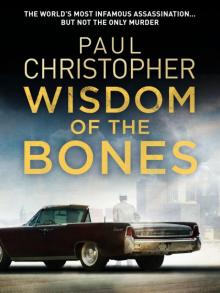 Wisdom of the Bones
Wisdom of the Bones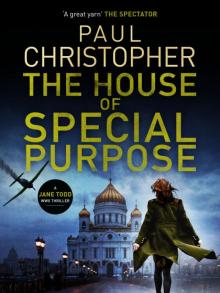 The House of Special Purpose
The House of Special Purpose The Second Assassin
The Second Assassin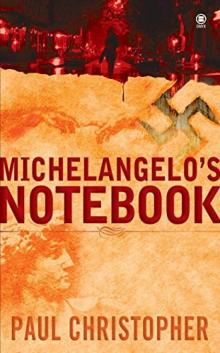 Michelangelo's Notebook
Michelangelo's Notebook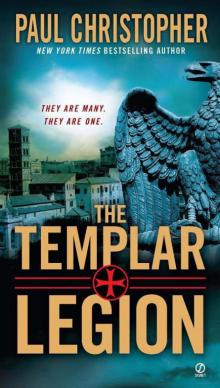 Templar Legion
Templar Legion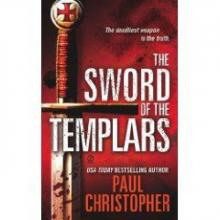 The Sword of the Templars t-1
The Sword of the Templars t-1 Red Templar
Red Templar The Aztec Heresy
The Aztec Heresy The Templar Legion
The Templar Legion Rembrandt's Ghost
Rembrandt's Ghost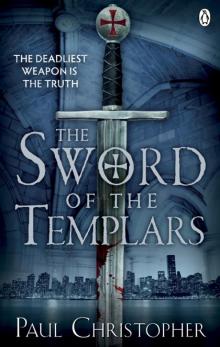 Sword of the Templars
Sword of the Templars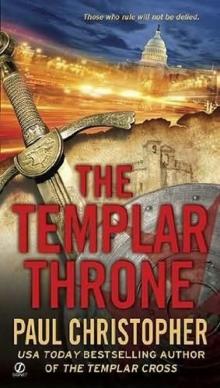 The Templar throne t-3
The Templar throne t-3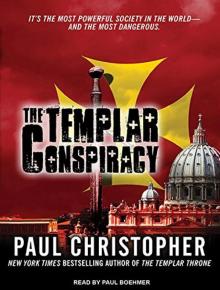 The Templar Conspiracy
The Templar Conspiracy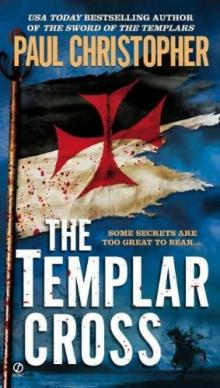 The Templar Cross t-2
The Templar Cross t-2 The Templar Legion t-5
The Templar Legion t-5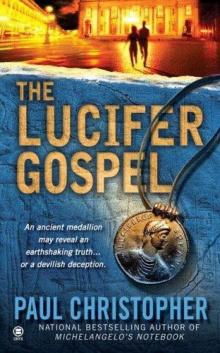 The Lucifer Gospel
The Lucifer Gospel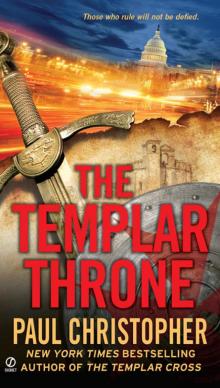 Templar Throne
Templar Throne Michelangelo_s Notebook fr-1
Michelangelo_s Notebook fr-1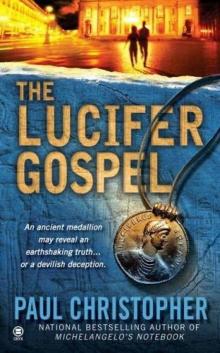 The Lucifer Gospel fr-2
The Lucifer Gospel fr-2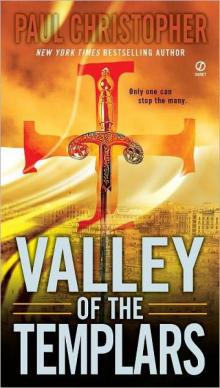 Valley of the Templars ts-7
Valley of the Templars ts-7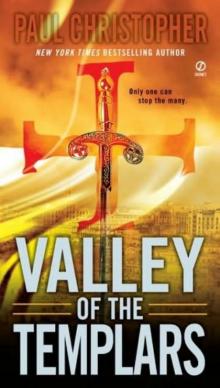 Valley of the Templars
Valley of the Templars Templar Cross
Templar Cross The Templar Throne
The Templar Throne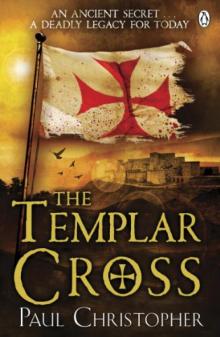 The Templar Cross
The Templar Cross Lost City of the Templars
Lost City of the Templars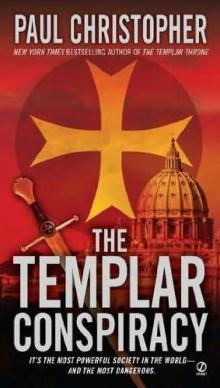 The Templar conspiracy t-4
The Templar conspiracy t-4 Templar Conspiracy
Templar Conspiracy